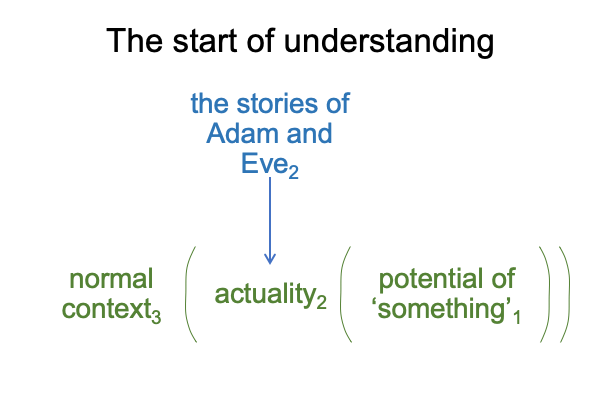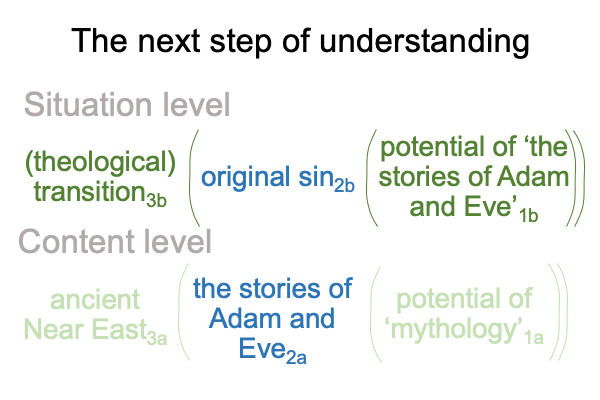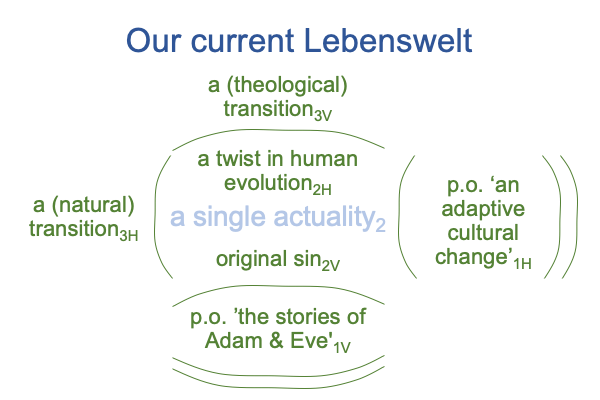0070 Chapter six is titled, “Adam and Eve in Scripture”.
Haarsma asks (more or less), “What is the best way to understand the Adam and Eve story in Genesis 2-3?”
0071 Surely, this is a question that humans evolve to ask. Humans want to understand.
We encounter an actuality. We then ask, “What normal context3 and potential1 applies to this actuality2?”
This is the start of understanding. We understand when we construct a category-based nested form.
0072 Here is a picture.

0073 The best way to understand the Adam and Eve story2 is to locate the most productive normal context3 and potential1.
0074 Haarsma begins with the normal context3 of historical scholarship of the Bible3.
The corresponding ‘something’ resolves into implications of the words in the text1.
For example, John Walton concludes that the names, Adam and Eve, are assigned names, not historical names. An assigned name is a name that is assigned by the storyteller. A historical name may be replaced by an assigned one.
Plus, the word, “Adam”, denotes “a man of the earth” as well as a person.
0075 Advocates for historical scholarship argue that Genesis 2:4-11 (unlike other origin stories of the ancient Near East) offers an unparalleled narrative theology. The issue is not whether Adam and Eve exist as historical persons. The issue is the clarity of theological meaning.
0076 The problem?
What about human evolution?
Well, if theologians appreciate the stories of Adam and Eve because of their theological clarity, in contrast to the other mythologies of the ancient Near East, then original sin must be a clear insight that situates the stories of Adam and Eve.
0077 This relationship may be diagrammed as a two-level interscope.

The doctrine of original sin2b situates the potential of the stories of Adam and Eve1b in the normal context of a theological transition to our current Lebenswelt3b.
The situation level clarifies the content level.
The stories of Adam and Eve2a situate the potential of origin myths, as investigated by historical scholarship1a, in the normal context of the ancient Near East3a.
0078 The situation-level is also the nested form that goes into the intersection of our current Lebenswelt. It constitutes the vertical axis.

0079 It makes me wonder, since the underlying content of original sin2V touches base with the ancient Near East, does the twist in human evolution2H potentiate the formation of civilization in southern Mesopotamia?
Consider Comments on Dennis Venema and Scot McKnight’s Book (2017) Adam and the Genome, available at smashwords and other e-book venues.
